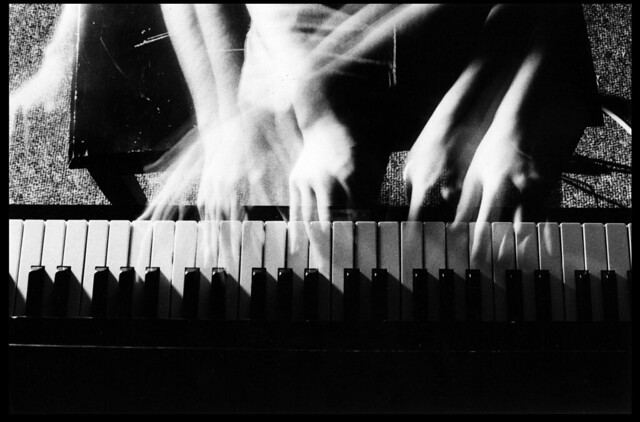 Composer Thomas Adès challenges these constraints. He looks for new possibilities of creating unfamiliar textures and sounds, and floods the score with instructions about tempo, dynamics—the performer is often asked to play several chords simultaneously with different dynamics for each one—and even the amount of pedal use in every moment (quarter-pedal, third-pedal, half-pedal, full pedal, or no pedal at all). The harmonic language is also unique. It combines severe renaissance counterpoint rules, 19th-century chord progressions, and 20th-century spices. Like putting old photo slides one on top of another, memories from different periods of life—a new picture is created. It is a stunning example of how the small details create the big picture; how extreme specificity creates an illusion of ambiguity.
Composer Thomas Adès challenges these constraints. He looks for new possibilities of creating unfamiliar textures and sounds, and floods the score with instructions about tempo, dynamics—the performer is often asked to play several chords simultaneously with different dynamics for each one—and even the amount of pedal use in every moment (quarter-pedal, third-pedal, half-pedal, full pedal, or no pedal at all). The harmonic language is also unique. It combines severe renaissance counterpoint rules, 19th-century chord progressions, and 20th-century spices. Like putting old photo slides one on top of another, memories from different periods of life—a new picture is created. It is a stunning example of how the small details create the big picture; how extreme specificity creates an illusion of ambiguity.In the beginning of the piece, the composer throws a fast arpeggio up in the air and watches it slowly descend, submitting to gravity, like a balloon losing its air. The names of the two first movements, as well as the title of the piece, evoke associations of “upwards.” Traced Overhead is a title that invites you to look up. The first movement—less than a minute long—is called “Sursum.” It comes from a part of the Christian Mass that begins with “Sursum Corda,” meaning “lift up your hearts.” The second movement is called “Aetheria”—Latin for sky, upper air, or ethereal. Longer than its predecessor, this movement is comprised of capricious music that quickly shifts between different ideas, like electric pulses in the brain during a dream. While these titles all suggest ascending, the piece is really about what happens after the rise—when gravity begins to run its course.
The heart of the piece is the last movement, called “Chori”—Choruses in English. It is the longest one, and it opens with three different chorales, like three choirs that sing different songs in different places of the cathedral at the same time. An ornament precedes each chord, creating a sound like wind chimes. The chords conflict with each other and create dissonances, musical clashes, aching and pleasing at the same time, like beauty that hurts the eye. When most piano music is normally written in two staves (one for each hand), here the score opens up to four, and later to six. The pianist has to constantly jump between registers and exchange hands for the different voices. This creates an illusion that the music is being played by more than one pianist—a technique commonly used by Mendelssohn—and adds to the distinct sonority of the piece.
The music wraps-up with an arpeggio à la Chopin, morphing unexpectedly from one harmony to another, until it disappears somewhere in the low keys of the piano. It invokes the very first arpeggio that opened the piece, now saying its farewell. What goes up must come down.
To listen to Traced Overhead click here

Great writing!
ReplyDeleteand a wonderful piece indeed.